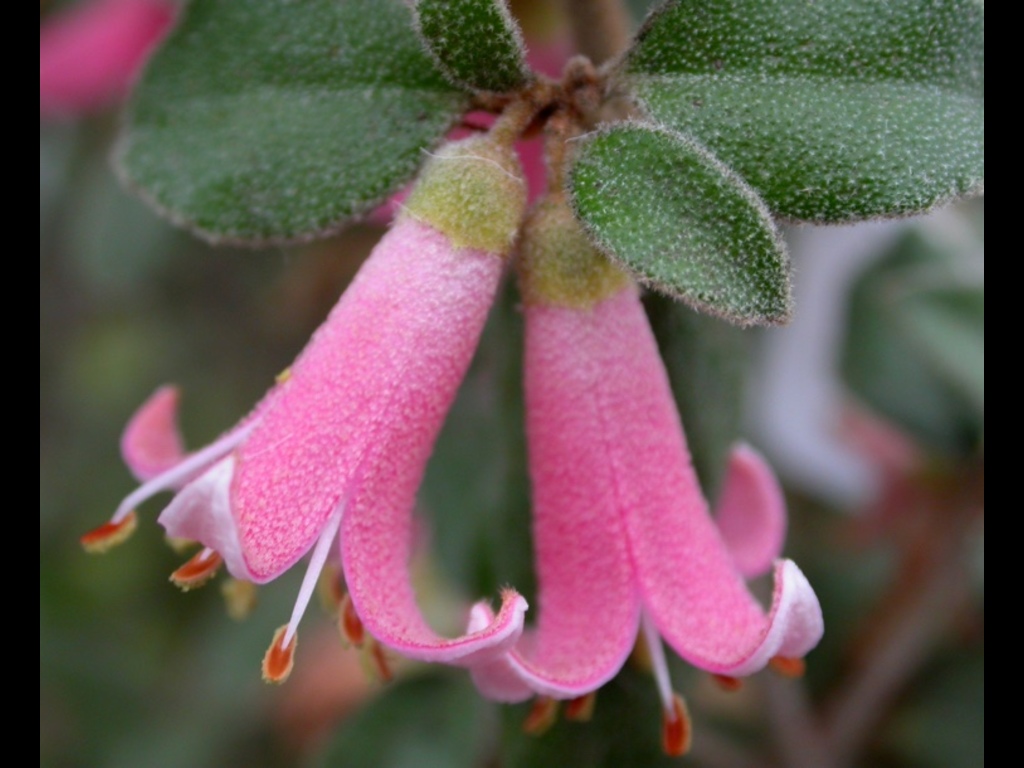Correa 'Candy Pink'
- File Number
- 434
- ACRA Field Book Number
- 291
- Registration Date
- 06/10/1990
- Application Received
- 01/06/1988
- Family
- Rutaceae
- Cultivar Name
- Correa 'Candy Pink'
- Origin
- The origin of this cultivar is obscure. It is a possible cross with C. alba as one parent. It is more difficult to assess the second parent with the applicant suggesting C. pulchella as the other parent. It is possibly one of many Correa cultivars produced in Canberra by a Mr Hartshorn in the early 1970's. The name refers to the colour of the flowers. The cultivar was first received by the Authority in June 1988. Registration applied for by Mr P Ollerenshaw of Bungendore, NSW.
- Characteristics
- Correa 'Candy Pink' grows into a dense, rounded shrub to 1m tall by 1m wide. The leaves are ovate to elliptical in shape, appear glabrous above but actually have a sparse covering of short stellate hairs, and are densely hairy below. The new growth is also coated with rusty brown stellate hairs. The flowers are very similar in shape and size to C. alba, and the corolla is split the same as in C. alba. The corolla colour is a dull pink in colour. Diagnosis: The flowers of Correa 'Candy Pink' immediately show that C. alba is one of the parents. The leaves are more elliptical and therefore unlike the oval leaves of C. alba. The flower colour is similar to but lighter than Correa 'Dusky Bells' which is a cross between C. reflexa and C. pulchella. It is difficult to determine this however and therefore further comparison is not undertaken.
- Cultivation
- This cultivar does well in conditions suitable for C. alba. It is very frost hardy, having been grown for some years in exposed conditions in the Canberra district. It is moderately hardy to drought. It performs well as a container plant and responds well to regular tip pruning.
- Publication
- Australian Cultivar Registration Authority (1993), Australian Plant Cultivars. Australian Plants 17(134):
- Colour Coding
- RHS Colour Code 1966t op part of corolla: red group 37Dlower section of corolla:greyed purple group 185D
- Propagation
- Cuttings from semi-firm new growth
- Applicant Name
- Peter Ollerenshaw
- Uses
- As part of a mass planting or mixed in a shrubbery, or as a feature plant. Attracts nectar feeding birds.
- Availability
- Specialist native plant nurseries
- ANBG Accession Numbers
- ACC434, ACRA291, CBG8801646
- NSL ID
- -

